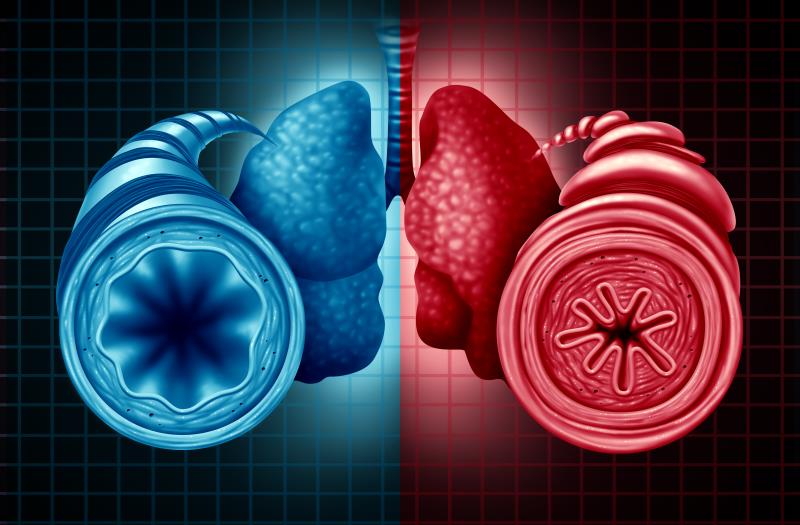Single-inhaler triple therapy combo improves FEV1 in patients with asthma





Treatment with fluticasone furoate/umeclidinium/vilanterol (FF/UMEC/VI), a LAMA/ICS/LABA combination, significantly improves trough FEV1* in symptomatic patients with inadequately controlled asthma compared with FF/VI only, according to the CAPTAIN** study presented at AAAAI 2020.
“Key goals of asthma therapy are improvement in lung function and symptom control,
and our results indicate that once-daily FF/UMEC/VI in a single inhaler may aid in achieving
these goals for the studied population,” said Professor Ian Pavord from the University of Oxford in Oxford, UK, and his team.
This phase III, multicentre, double-blind, parallel-group trial involved 2,436 patients (mean age 53.2 years, 38 percent male, mean BMI 29.4 kg/m2) with inadequately controlled asthma who received fluticasone propionate/salmeterol 250/50 mcg twice daily for a 3-week run-in period and FF/VI 100/25 mcg once daily for a 2-week stabilization period before randomization. Participants were then randomized in a 1:1:1:1:1:1 ratio to receive FF/UMEC/VI (100/62.5/25 mcg [group 1]; 100/31.25/25 mcg [group 2]; 200/62.5/25 mcg [group 3]; 200/31.25/25 mcg [group 4]) or FF/VI only (100/25 mcg [group 5]; 200/25 mcg [group 6]) once daily via the ELLIPTA inhaler for 52 weeks, with a fixed treatment from 0–24 weeks. [AAAAI 2020, abstract 785]
After 24 weeks, a significant improvement in trough FEV1 from baseline was observed among patients in group 1 compared with those in group 5 (134 vs 24 mL; mean difference, 110 mL; p<0.001).
Similarly, those in group 3 demonstrated a significant improvement in trough FEV1 from baseline to week 24 compared with patients in group 6 (168 vs 76 mL; mean difference, 92 mL; p<0.001).
A significant improvement in trough FEV1 at 24 weeks was also observed among patients in group 2 vs group 5 (120 vs 24 mL; mean difference, 96 mL; p<0.001) and group 4 vs group 6 (157 vs 76 mL; mean difference, 82 mL; p<0.001). [However, the] p-values [for this analysis] were not adjusted for multiplicity … due to break in statistical hierarchy at step 2 (moderate/severe exacerbations),” the researchers noted.
Of the 28 percent of patients who experienced a moderate/severe asthma exacerbation, those who received UMEC 62.5 mcg with either dose of FF/VI had a nonsignificant 13 percent reduction in the annualized rate of exacerbation than either dose of FF/VI only (mean 0.61 percent vs 0.70 percent; pooled adjusted rate ratio, 0.87; p=0.151).
Adverse events (AEs) were comparable between the FF/UMEC/VI and FF/VI only treatment groups. “The addition of UMEC to FF/VI did not have a negative impact on either type, severity, or incidence of AEs, including AE of special interest, demonstrating that the triple therapy combination was well tolerated,” Pavord and team noted.
“Addition of UMEC 62.5 mcg to both doses of FF/VI offered significant improvements in lung function, [as shown by greater improvements in trough FEV1, and] … reductions in moderate/severe exacerbation rates,” they concluded.
“Significant improvements were also seen with added UMEC 31.25 mcg, [but this was] not adjusted for multiplicity,” they added.
*FEV1: Forced expiratory volume in 1 second
**CAPTAIN: Clinical study in Asthma Patients receiving Triple therapy in A single INhaler